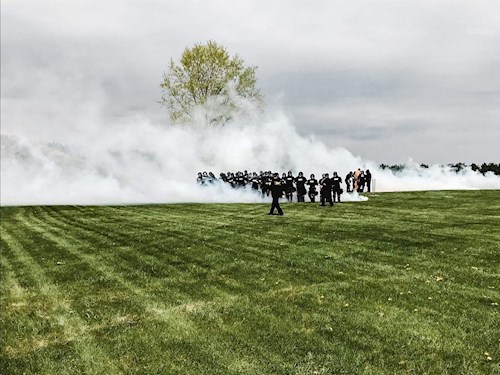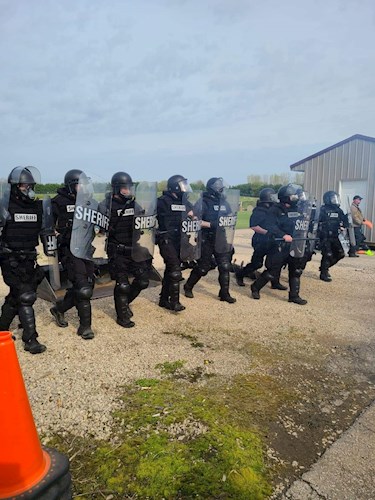

The Dane County Sheriff's Office Special Events Team (SET) has been successfully deployed to large gatherings, protests, and disturbances since the 1960s. As a matter of fact, SET gained national recognition during the Vietnam protests for its innovation in formalizing procedures for mass arrests.
In 2009, the SET Team entered a new chapter to its storied past. For much of its history, the Special Events Team trained and used what was dubbed the 'Madison Method'. In preparation for the 2002 US Conference of Mayors, SET received a facelift. The team used a structure known as the Mobile Field Force (MFF) model. Under this model, team structures were configured in a manner that facilitated easy deployment from vehicles. The smallest element of the MFF model was the squad element, which consisted of seven Line Officers and a sergeant that served as the Squad Leader. This structure has served the team well.
Recognizing the need to proactively anticipate and train for the emerging threats of the 21st Century, the State of Wisconsin selected eleven officers from around the state to attend five weeks of intense training to certify them to a Crowd Management Training Cadre (CMTC).
Following the State's lead, in late 2008 a proposal was submitted to change the structure of the Special Events Team to the Mini-Team Model. One of the main themes with this model is addressing the persistent problems of communication, accountability, and consistency. Under this model, the squad element still exists, but it is also sub-divided into smaller elements known as mini-teams. A mini-team is a smaller group of four officers, with one of them (a non-supervisor), acting as the Mini-Team Leader.
Organizing into four-officer elements is important during a crisis situation because it allows them to move into a diamond formation, which is consistent with what officers have already been trained to do during an active shooter scenario. Given the 'target-rich' environment that crowd management teams work in, there are a number of different threats that could present themselves. When a Mini-Team Leader recognizes a "rapidly evolving threat," he/she has to act immediately by using Initiative Based Tactics, the diamond formation, to respond. This change in structure represents a paradigm shift from how the Special Events Team has trained and operated in the past.
